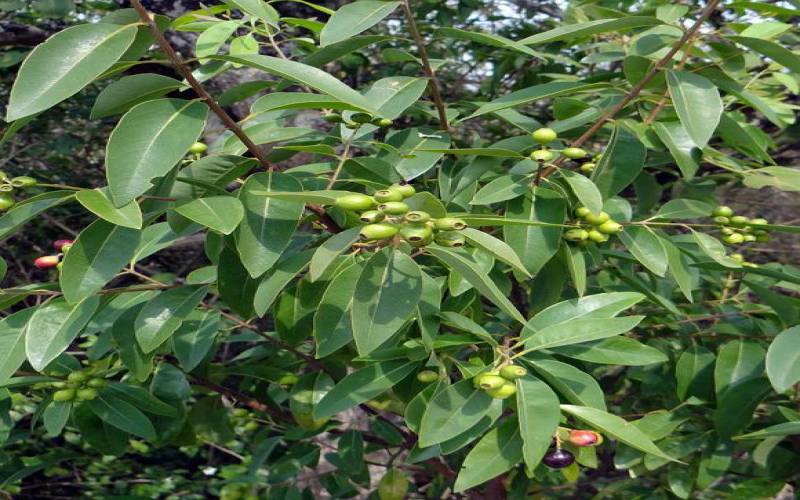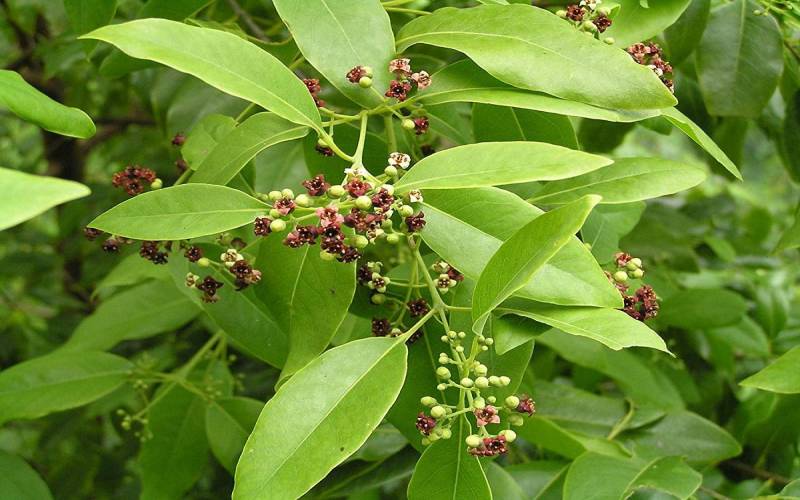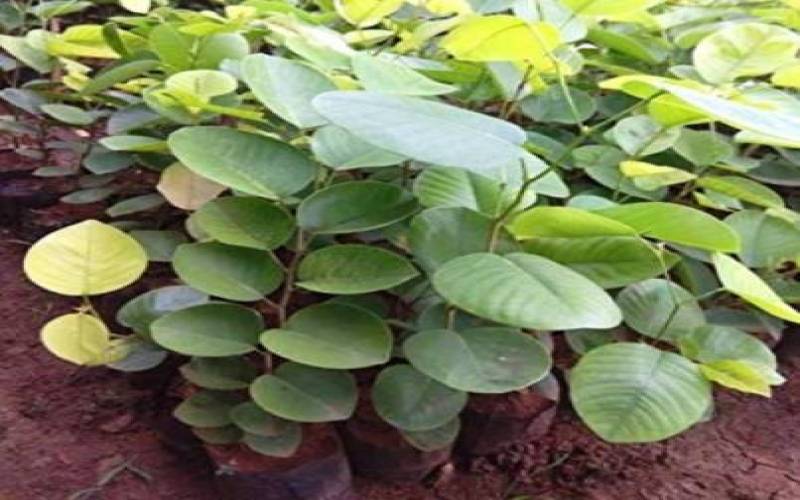Sandalwood Tree (Chandan Tree), India
In Hinduism, chandan, or aromatic wood (chandanam), is revered. The Sanskrit Root Cadi means 'to please' or 'something which delights.' Chandan is derived from this root. Sandalwood's significance in Hinduism can be gauged by the fact that it is also known as Bhadra Shri, which means "auspicious and pleasantly great."
The chandan tree is thought to have originated in Malaya, a historically and theologically significant southern Indian mountain. Chandana is known as malayaja because of this (born in Malaya). Cool and fragrant breezes are said to blow from the Malaya mountains (Malayamarutham). According to the Puranas, the Chandana used by gods in heaven is known as Harichandana, whereas the Chandana used by humans in the service of gods is known as Srichandana.Devout Hindus make five daily offerings to gods and goddesses, which include anointing the murti with gandha (fragrant) things, waving dhoopa (incense), providing pushpa (flowers) or flower garlands, lighting a deepa (lamp), and offering naivedya (food). Chandan is used in a variety of ways to make gandha offerings. Murtis depicting Hindu Gods and Goddesses are also fashioned out of Chandan wood.
Chandana kappu refers to the smearing of sandalwood paste on images of deities (vigraha) at temples. In most temples in Kerala, sandal paste is used to anoint the deities. In many Sri Krishna temples, Dasavatharam is made on the same murti with sandalwood paste. In some temples, the revered deity appears in three different forms during the day: morning, noon, and evening. Sandalwood paste is used to produce the three forms on the same murti.



